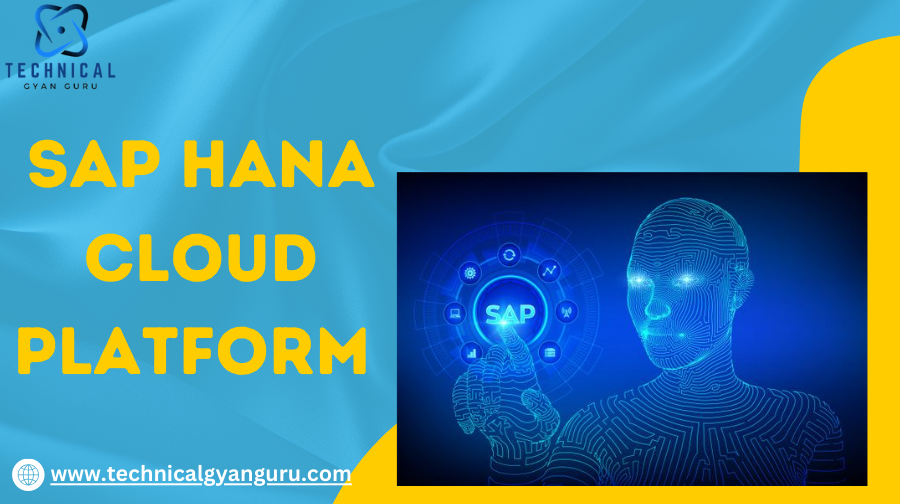
Unlock the power of SAP HANA Cloud Platform with real-time data processing, advanced analytics, and seamless integration. Boost performance and innovation today
In today’s rapidly evolving digital landscape, businesses require agile and scalable solutions to stay competitive. SAP HANA Cloud Platform (SCP) has emerged as a robust cloud-based solution designed to meet these needs. This comprehensive guide will delve into the key features, benefits, and implementation strategies of SAP HANA Cloud Platform, helping you understand how it can drive innovation and efficiency within your organization.
What is SAP HANA Cloud Platform?
SAP HANA Cloud Platform is an enterprise-grade, cloud-based platform-as-a-service (PaaS) offered by SAP. It provides a suite of tools and services for developing, managing, and running applications in the cloud. Built on the powerful SAP HANA in-memory database, SCP enables real-time data processing and analytics, offering businesses unparalleled insights and performance.
Key Features of SAP HANA Cloud Platform
- In-Memory Data Processing: At the heart of SCP is SAP HANA’s in-memory database, which allows for high-speed data processing and analytics. This feature enables businesses to handle large volumes of data efficiently and gain real-time insights.
- Integrated Development Environment: SCP offers a comprehensive development environment that supports various programming languages, including Java, JavaScript, and Python. Developers can build, deploy, and manage applications seamlessly using this integrated environment.
- Advanced Analytics: The platform provides advanced analytics capabilities, including predictive analytics, machine learning, and data visualization tools. These features help businesses uncover hidden patterns and make data-driven decisions.
- Scalability and Flexibility: SAP HANA Cloud Platform is designed to scale with your business needs. Whether you need to expand your applications or integrate new functionalities, SCP offers the flexibility to adapt to changing requirements.
- Security and Compliance: Security is a top priority for SAP HANA Cloud Platform. It includes robust security features such as data encryption, access controls, and compliance with industry standards to ensure your data remains protected.
Benefits of SAP HANA Cloud Platform
- Enhanced Performance: The in-memory processing capabilities of SCP significantly enhance application performance and reduce latency, allowing for real-time data access and analysis.
- Cost Efficiency: By leveraging the cloud, businesses can reduce infrastructure costs associated with on-premise solutions. SCP’s pay-as-you-go model ensures you only pay for the resources you use.
- Faster Time-to-Market: The integrated development environment and pre-built services streamline the application development process, enabling faster deployment and quicker time-to-market for new solutions.
- Seamless Integration: SCP easily integrates with other SAP solutions and third-party applications, providing a unified approach to managing business processes and data.
- Innovation Opportunities: With access to advanced technologies such as machine learning and IoT, businesses can innovate and create cutting-edge solutions that drive growth and efficiency.
Implementation Strategies
- Define Your Objectives: Before implementing SCP, clearly define your business objectives and requirements. This will help you tailor the platform’s features to meet your specific needs.
- Leverage SAP Best Practices: Utilize SAP’s best practices and guidelines for a smooth implementation process. This includes following recommended architecture patterns and leveraging pre-built templates and services.
- Develop a Migration Plan: If transitioning from an on-premise solution, create a detailed migration plan to ensure a seamless shift to the cloud. Consider factors such as data transfer, application compatibility, and user training.
- Monitor and Optimize: Once implemented, continuously monitor the performance of your applications and optimize them based on user feedback and performance metrics. SCP provides tools for monitoring and managing application performance.
- Invest in Training: Ensure that your team is well-versed in using SAP HANA Cloud Platform. Invest in training and resources to maximize the platform’s potential and ensure a successful adoption.
Conclusion
SAP HANA Cloud Platform is a powerful tool for businesses looking to leverage cloud technology for enhanced performance, scalability, and innovation. By understanding its key features, benefits, and implementation strategies, you can harness the full potential of SCP to drive growth and efficiency within your organization.
you may be interested in this blog here:-
Why Use SAP SuccessFactors: A Game-Changer for HR and Business Growth
Top SAP Modules in Demand 2024 Insights & Trends
Learn how to update function modules in SAP ABAP easily
Mastering the Duolingo English Test: Sample Questions and Answers







